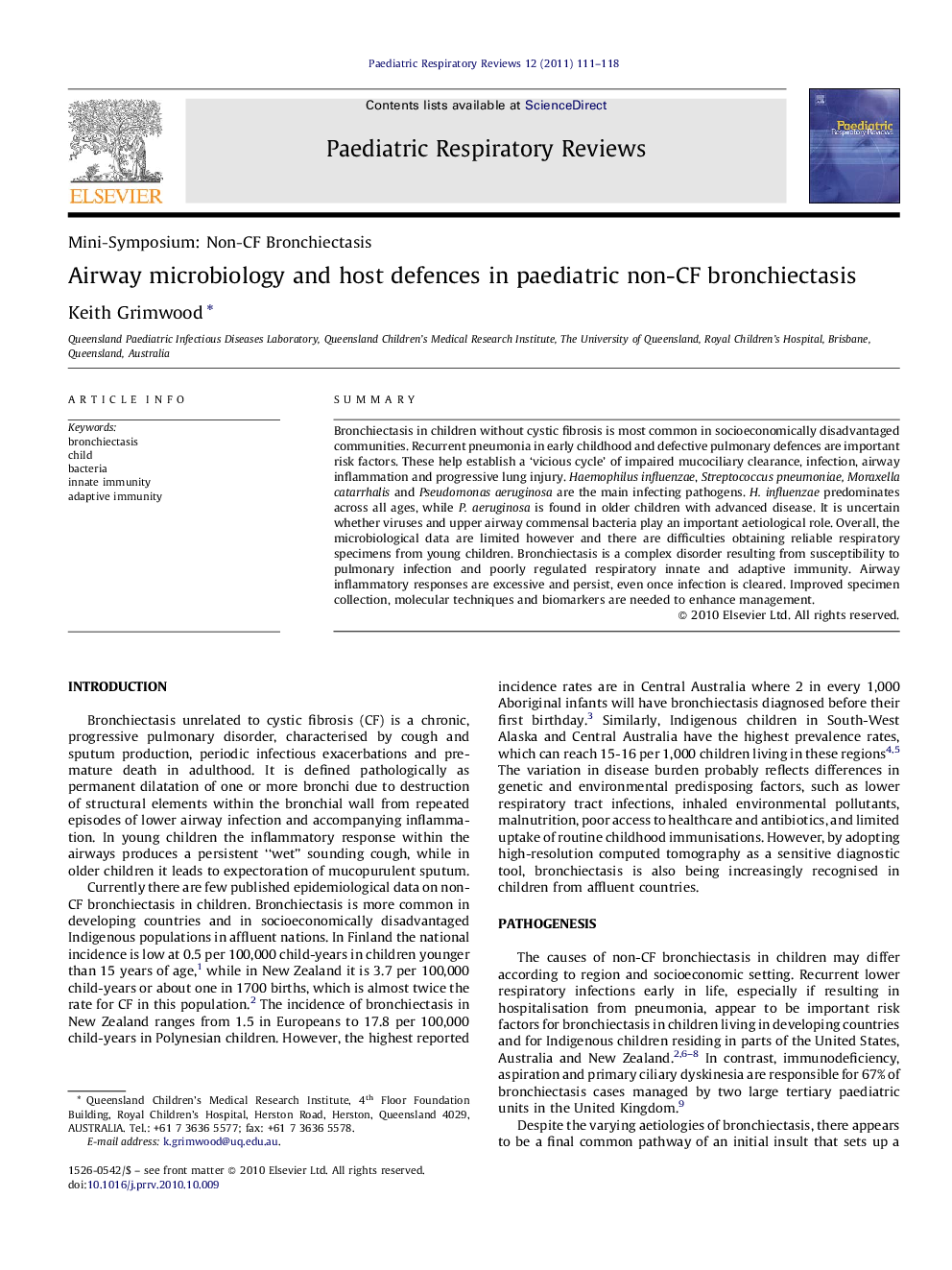| Article ID | Journal | Published Year | Pages | File Type |
|---|---|---|---|---|
| 4171428 | Paediatric Respiratory Reviews | 2011 | 8 Pages |
SummaryBronchiectasis in children without cystic fibrosis is most common in socioeconomically disadvantaged communities. Recurrent pneumonia in early childhood and defective pulmonary defences are important risk factors. These help establish a ‘vicious cycle’ of impaired mucociliary clearance, infection, airway inflammation and progressive lung injury. Haemophilus influenzae, Streptococcus pneumoniae, Moraxella catarrhalis and Pseudomonas aeruginosa are the main infecting pathogens. H. influenzae predominates across all ages, while P. aeruginosa is found in older children with advanced disease. It is uncertain whether viruses and upper airway commensal bacteria play an important aetiological role. Overall, the microbiological data are limited however and there are difficulties obtaining reliable respiratory specimens from young children. Bronchiectasis is a complex disorder resulting from susceptibility to pulmonary infection and poorly regulated respiratory innate and adaptive immunity. Airway inflammatory responses are excessive and persist, even once infection is cleared. Improved specimen collection, molecular techniques and biomarkers are needed to enhance management.
